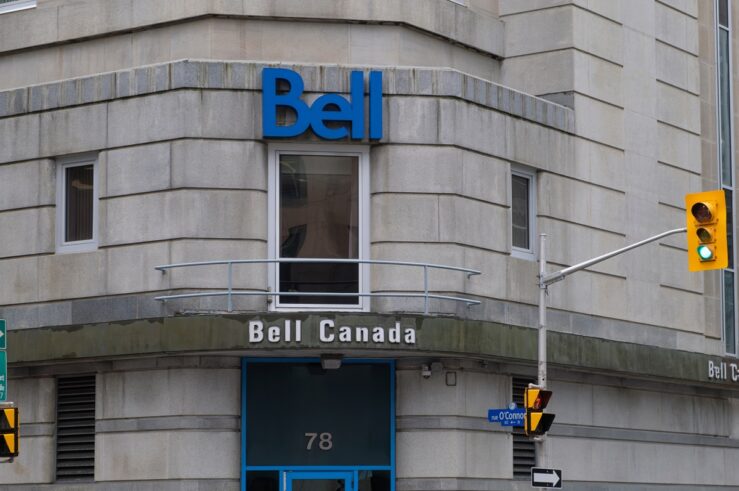In the face of an unprecedented surge of demand for bandwidth as Americans responded to COVID-19, the nation’s Internet infrastructure delivered for urban and rural users alike. In fact, since the crisis began in March, there has been no appreciable degradation in either the quality or availability of service. That success story is as much about the network’s robust technical capabilities as it is about the competitive environment that made the enormous private infrastructure investments to build the network possible.
Yet, in spite of that success, calls to blind ISP pricing models to the bandwidth demands of users by preventing firms from employing “usage-based billing” (UBB) have again resurfaced. Today those demands are arriving in two waves: first, in the context of a petition by Charter Communications to employ the practice as the conditions of its merger with Time Warner Cable become ripe for review; and second in the form of complaints about ISPs re-imposing UBB following an end to the voluntary temporary halting of the practice during the first months of the COVID-19 pandemic — a move that was an expansion by ISPs of the Keep Americans Connected Pledge championed by FCC Chairman Ajit Pai.
In particular, critics believe they have found clear evidence to support their repeated claims that UBB isn’t necessary for network management purposes as (they assert) ISPs have long claimed. Devin Coldewey of TechCrunch, for example, recently asserted that:
caps are completely unnecessary, existing only as a way to squeeze more money from subscribers. Data caps just don’t matter any more…. Think about it: If the internet provider can even temporarily lift the data caps, then there is definitively enough capacity for the network to be used without those caps. If there’s enough capacity, then why did the caps exist in the first place? Answer: Because they make money.
The thing is, though, ISPs did not claim that UBB was about the day-to-day “manage[ment of] network loads.” Indeed, the network management strawman has taken on a life of its own. It turns out that if you follow the thread of articles in an attempt to substantiate the claim (for instance: here, to here, to here, to here), it is just a long line of critics citing to each other’s criticisms of this purported claim by ISPs. But never do they cite to the ISPs themselves making this assertion — only to instances where ISPs offer completely different explanations, coupled with the critics’ claims that such examples show only that ISPs are now changing their tune. In reality, the imposition of usage-based billing is, and has always been, a basic business decision — as it is for every other company that uses it (which is to say: virtually all companies).
What’s UBB really about?
For critics, however, UBB is never just a “basic business decision.” Rather, the only conceivable explanations for UBB are network management and extraction of money. There is no room in this conception of the practice for perfectly straightforward pricing decisions that offer pricing that differs by customers’ usage of the services. Nor does this viewpoint recognize the importance of these pricing practices for long-term network cultivation in the form of investment in increasing capacity to meet the increased demands generated by users.
But to disregard these actual reasons for the use of UBB is to ignore what is economically self-evident.
In simple terms, UBB allows networks to charge heavy users more, thereby enabling them to recover more costs from these users and to keep prices lower for everyone else. In effect, UBB ensures that the few heaviest users subsidize the vast majority of other users, rather than the other way around.
A flat-rate pricing mandate wouldn’t allow pricing structures based on cost recovery. In such a world an ISP couldn’t simply offer a lower price to lighter users for a basic tier and rely on higher revenues from the heaviest users to cover the costs of network investment. Instead, it would have to finance its ability to improve its network to meet the needs of the most demanding users out of higher prices charged to all users, including the least demanding users that make up the vast majority of users on networks today (for example, according to Comcast, 95 percent of its subscribers use less than 1.2 TB of data monthly).
On this basis, UBB is a sensible (and equitable, as some ISPs note) way to share the cost of building, maintaining, and upgrading the nation’s networks that simultaneously allows ISPs to react to demand changes in the market while enabling consumers to purchase a tier of service commensurate with their level of use. Indeed, charging customers based on the quality and/or amount of a product they use is a benign, even progressive, practice that insulates the majority of consumers from the obligation to cross-subsidize the most demanding customers.
Objections to the use of UBB fall generally into two categories. One stems from the sort of baseline policy misapprehension that it is needed to manage the network, but that fallacy is dispelled above. The other is borne of a simple lack of familiarity with the practice.
Consider that, in the context of Internet services, broadband customers are accustomed to the notion that access to greater data speed is more costly than the alternative, but are underexposed to the related notion of charging based upon broadband data consumption. Below, we’ll discuss the prevalence of UBB across sectors, how it works in the context of broadband Internet service, and the ultimate benefit associated with allowing for a diversity of pricing models among ISPs.
Usage-based pricing in other sectors
To nobody’s surprise, usage-based pricing is common across all sectors of the economy. Anything you buy by the unit, or by weight, is subject to “usage-based pricing.” Thus, this is how we buy apples from the grocery store and gasoline for our cars.
Usage-based pricing need not always be so linear, either. In the tech sector, for instance, when you hop in a ride-sharing service like Uber or Lyft, you’re charged a base fare, plus a rate that varies according to the distance of your trip. By the same token, cloud storage services like Dropbox and Box operate under a “freemium” model in which a basic amount of storage and services is offered for free, while access to higher storage tiers and enhanced services costs increasingly more. In each case the customer is effectively responsible (at least in part) for supporting the service to the extent of her use of its infrastructure.
Even in sectors in which virtually all consumers are obligated to purchase products and where regulatory scrutiny is profound — as is the case with utilities and insurance — non-linear and usage-based pricing are still common. That’s because customers who use more electricity or who drive their vehicles more use a larger fraction of shared infrastructure, whether physical conduits or a risk-sharing platform. The regulators of these sectors recognize that tremendous public good is associated with the persistence of utility and insurance products, and that fairly apportioning the costs of their operations requires differentiating between customers on the basis of their use. In point of fact (as we’ve known at least since Ronald Coase pointed it out in 1946), the most efficient and most equitable pricing structure for such products is a two-part tariff incorporating both a fixed, base rate, as well as a variable charge based on usage.
Pricing models that don’t account for the extent of customer use are vanishingly rare. “All-inclusive” experiences like Club Med or the Golden Corral all-you-can-eat buffet are the exception and not the rule when it comes to consumer goods. And it is well-understood that such examples adopt effectively regressive pricing — charging everyone a high enough price to ensure that they earn sufficient return from the vast majority of light eaters to offset the occasional losses from the gorgers. For most eaters, in other words, a buffet lunch tends to cost more and deliver less than a menu-based lunch.
All of which is to say that the typical ISP pricing model — in which charges are based on a generous, and historically growing, basic tier coupled with an additional charge that increases with data use that exceeds the basic allotment — is utterly unremarkable. Rather, the mandatory imposition of uniform or flat-fee pricing would be an aberration.
Aligning network costs with usage
Throughout its history, Internet usage has increased constantly and often dramatically. This ever-growing need has necessitated investment in US broadband infrastructure running into the tens of billions annually. Faced with the need for this investment, UBB is a tool that helps to equitably align network costs with different customers’ usage levels in a way that promotes both access and resilience.
As President Obama’s first FCC Chairman, Julius Genachowski, put it:
Our work has also demonstrated the importance of business innovation to promote network investment and efficient use of networks, including measures to match price to cost such as usage-based pricing.
Importantly, it is the marginal impact of the highest-usage customers that drives a great deal of those network investment costs. In the case of one ISP, a mere 5 percent of residential users make up over 20 percent of its network usage. Necessarily then, in the absence of UBB and given the constant need for capacity expansion, uniform pricing would typically act to disadvantage low-volume customers and benefit high-volume customers.
Even Tom Wheeler — President Obama’s second FCC Chairman and the architect of utility-style regulation of ISPs — recognized this fact and chose to reject proposals to ban UBB in the 2015 Open Internet Order, explaining that:
[P]rohibiting tiered or usage-based pricing and requiring all subscribers to pay the same amount for broadband service, regardless of the performance or usage of the service, would force lighter end users of the network to subsidize heavier end users. It would also foreclose practices that may appropriately align incentives to encourage efficient use of networks. (emphasis added)
When it comes to expanding Internet connectivity, the policy ramifications of uniform pricing are regressive. As such, they run counter to the stated goals of policymakers across the political spectrum insofar as they deter low-volume users — presumably, precisely the marginal users who may be disinclined to subscribe in the first place — from subscribing by saddling them with higher prices than they would face with capacity pricing. Closing the digital divide means supporting the development of a network that is at once sustainable and equitable on the basis of its scope and use. Mandated uniform pricing accomplishes neither.
Of similarly profound importance is the need to ensure that Internet infrastructure is ready for demand shocks, as we saw with the COVID-19 crisis. Linking pricing to usage gives ISPs the incentive and wherewithal to build and maintain high-capacity networks to cater to the ever-growing expectations of high-volume users, while also encouraging the adoption of network efficiencies geared towards conserving capacity (e.g., caching, downloading at off-peak hours rather than streaming during peak periods).
Contrary to the claims of some that the success of ISPs’ networks during the COVID-19 crisis shows that UBB is unnecessary and extractive, the recent increases in network usage (which may well persist beyond the eventual end of the crisis) demonstrate the benefits of nonlinear pricing models like UBB. Indeed, the consistent efforts to build out the network to serve high-usage customers, funded in part by UBB, redounds not only to the advantage of abnormal users in regular times, but also to the advantage of regular users in abnormal times.
The need for greater capacity along with capacity-conserving efficiencies has been underscored by the scale of the demand shock among high-load users resulting from COVID-19. According to OpenVault, a data use tracking service, the number of “power users” and “extreme power users” utilizing 1TB/month or more and 2TB/month or more jumped 138 percent and 215 percent respectively. Meaning that now, in total, power users represent 10 percent of subscribers across the network, while extreme power users comprise 1.2 percent of subscribers.
Pricing plans predicated on load volume necessarily evolve along with network capacity, but at this moment the application of UBB for monthly loads above 1TB ensures that ISPs maintain an incentive to cater to power users and extreme power users alike. In doing so, ISPs are also ensuring that all users are protected when the Internet’s next abnormal — but, sadly, predictable — event arrives.
At the same time, UBB also helps to facilitate the sort of customer-side network efficiencies that may emerge as especially important during times of abnormally elevated demand. Customers’ usage need not be indifferent to the value of the data they use, and usage-based pricing helps to ensure that data usage aligns not only with costs but also with the data’s value to consumers. In this way the behavior of both ISPs and customers will better reflect the objective realities of the nations’ networks and their limits.
The case for pricing freedom
Finally, it must be noted that ISPs are not all alike, and that the market sustains a range of pricing models across ISPs according to what suits their particular business models, network characteristics, load capacity, and user types (among other things). Consider that even ISPs that utilize UBB almost always offer unlimited data products, while some ISPs choose to adopt uniform pricing to differentiate their offerings. In fact, at least one ISP has moved to uniform billing in light of COVID-19 to provide their customers with “certainty” about their bills.
The mistake isn’t in any given ISP electing a uniform billing structure or a usage-based billing structure; rather it is in proscribing the use of a single pricing structure for all ISPs. Claims that such price controls are necessary because consumers are harmed by UBB ignore its prevalence across the economy, its salutary effect on network access and resilience, and the manner in which it promotes affordability and a sensible allocation of cost recovery across consumers.
Moreover, network costs and traffic demand patterns are dynamic, and the availability of UBB — among other pricing schemes — also allows ISPs to tailor their offerings to those changing conditions in a manner that differentiates them from their competitors. In doing so, those offerings are optimized to be attractive in the moment, while still facilitating network maintenance and expansion in the future.
Where economically viable, more choice is always preferable. The notion that consumers will somehow be harmed if they get to choose Internet services based not only on speed, but also load, is a specious product of the confused and the unfamiliar. The sooner the stigma around UBB is overcome, the better-off the majority of US broadband customers will be.





